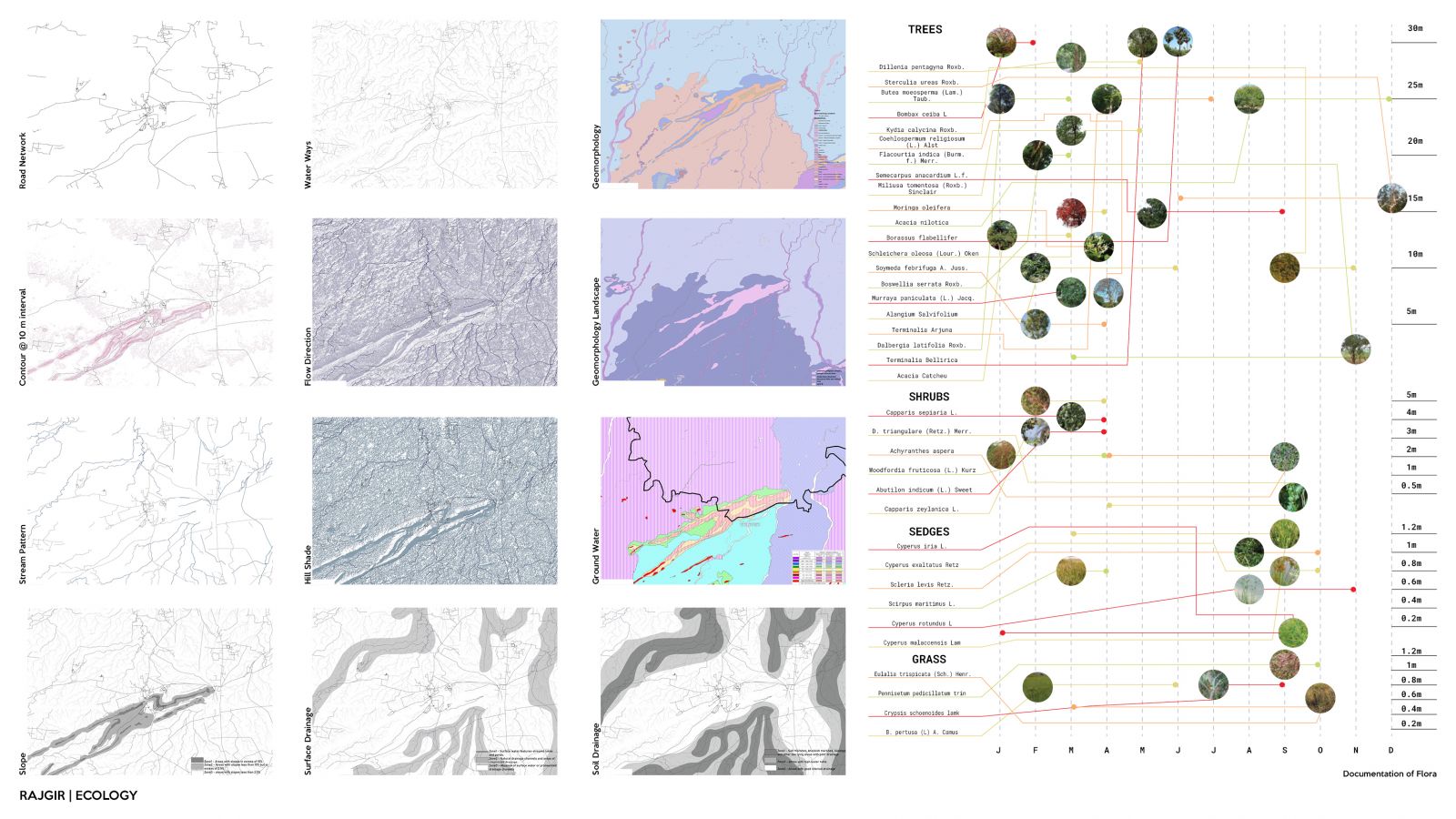- Student Shah Yash Jigarbhai
- Code UG180694
- Faculty Planning
- Tutor/s Rajiv Kadam,Piyas Chaudhuri
- TA Vaishnavi Akilla
The city of Rajgir is the first capital city of the kingdom of Magadha, a state that evolved into the Mauryan Empire. The ancient metropolis finds mention in greatest literary epics like Mahabharat, and in the many Buddhist and Jain manuscripts of worship. There are mentions of the great experience of Rajgir as a nature’s gem thereby enriching the cultural identity of the place. The rich cultural identity of Rajgir is the main guiding principle behind the vision for the project. It aims is to create a design narrative, to familiarise people with the rich identity through indigenous design, also balancing cultural and physical environment. Introducing and promoting old cultural products and formulating integration of various individual programmes with the villages in order to manage strategies and promote tourism, in an attempt to expose Rajgir’s culture and heritage, for local people as well as for national and international tourists. The topography has also played an important role in Rajgir’s identity and have always had a strong impact on the city’s historic, economic and cultural development. The future development thus addresses the nature of natural topography and tries to strengthen these interfaces between public, nature and water underlining the historic and future importance of Rajgir. The masterplan proposes a high green ratio as key part of the identity of the neighbourhood. In order to achieve the same, the design aims at devising spaces of interest for various user groups , from old age citizens to pilgrim tourists and of tourism specific to various genres including sports and cinema as well as domestic and international tourists and contain these programs into loops , incorporating various programs along with the already existing developments for the purpose of income generation and integrating identity, so as to confide Rajgir as an integral part of an individual’s journey. These programs are a combination of tangible and intangible aspects, including art and craft workshops for locally renowned arts, agriculture, village museums depicting new and old traditions, tools and techniques, recreational spaces, hiking trails, therapeutic programs, nature parks, etc. along with space reservation for basic amenities of accommodation and an accessible transit systems. The masterplan thoroughly aims to create different levels of circuits, which provides an individual the liberty to choose between possible course of action, a narrative walk through the site in their own individual conventions.







